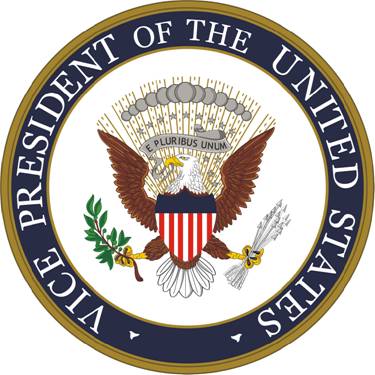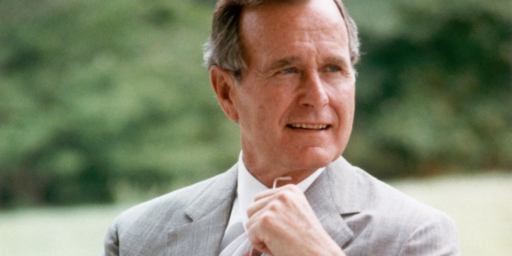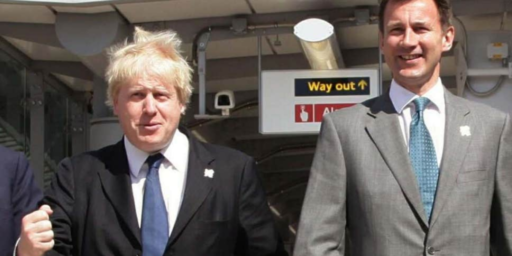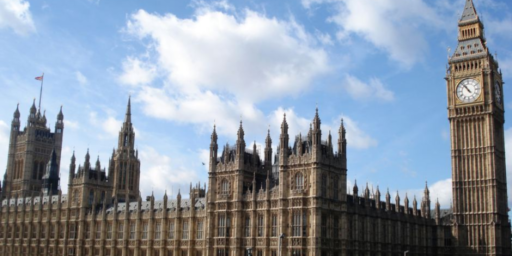A Warm Bucket of Spit
 Given that George H.W. Bush was the last sitting vice president to be elected president, Megan McArdle muses that the “VP slot seems to be a lot less important than it used to be.” Steven Taylor isn’t so sure that it even used to be all that important.
Given that George H.W. Bush was the last sitting vice president to be elected president, Megan McArdle muses that the “VP slot seems to be a lot less important than it used to be.” Steven Taylor isn’t so sure that it even used to be all that important.
Indeed, only four sitting vice presidents (John Adams, Thomas Jefferson, Martin Van Buren, and Bush) have been elected directly to the presidency, period. Then again, only 42 men have served as President of the United States since the Constitution was ratified in 1789 and fourteen of them — fully a third — were previously vice presidents. In addition to the four who were “promoted” via the Electoral College, another nine succeeded upon the death (Chester Arthur, Calvin Coolidge, Millard Fillmore, Andrew Johnson, John Tyler, Lyndon Johnson, Theodore Roosevelt, Harry Truman) or resignation (Gerald Ford) of a president, and Richard Nixon was ultimately elected in 1968 after having failed narrowly in 1960.
A fifteenth, Al Gore, won the popular vote in 2000 but lost narrowly in the Electoral College. A handful of other vice presidents (Walter Mondale and Hubert Humphrey come to mind; I don’t have time to research the others) have also at least gotten major party nominations and had a shot at the job.
So, all in all, the vice presidency is a fine perch from which to launch a presidential bid. No other office, certainly, has a better track record.






I guess it depends on how specific “other office” is–but if we just consider being a governor another office (even if there are 50 of them at a given time), it is clear that being a governor is a better career path to the presidency–at least of late (e.g., 4 of the last 5 were governors: Bush 43, Clinton, Reagan, and Carter).
That’s true, certainly. Then again, as you say, there are 50 governors at a time versus one vice president, so it rather skews the odds.
Still, VPs have historically had a 1 in 3 chance at eventually becoming president one way or the other.
Unless you’re suggesting a scenario in which the Vice President arranges for the death of the sitting president, that leaves just five Vice Presidents who’ve become president on their own. Four of those are from the Federal period during which Vice Presidents had constituencies of their own.
That leaves just one: Nixon, whom I’d suggest is not a particularly good example of anything.
Contrary to the post, I think that the Vice Presidency is an awful platform for seeking the presidency. IMO the correct way to measure that is to determine how many sitting vice presidents sought the Presidency and failed. My recollection is that it’s rather common and practically all fail.
But why are you wasting your life reading Megan in the first place, James?
Regards, C
Perhaps the best way to describe it is that the VP slot is the best office to have a decent shot at becoming president, with ‘decent shot’ meaning that you had a realistic path to the party’s nomination. Using that as a criteria, it’s a great office to hold if you have presidential ambitions. Of curse, you still have to seal the deal.
Would Truman, Johnson or Ford have been able to parlay sitting in the VP chair to presidency in a ‘normal election’? 6K votes in Ohio and 7K votes in Mississippi (or 17K votes in Wisconsin) changing sides would have given him the win. Nixon was within 13K votes changing to win in 1960. Mondale got his party’s nod, but was steamrolled. Bush went directly from VP to Pres. Gore came within a few hundred votes of winning.
Or to put it another way, Since FDR, former VP Truman, Nixon, Johnson, Ford, and Bush ’41 all served as president. Humphrey, Mondale and Gore all got their parties nod. Only Barkley under Truman, Agnew under Nixon, Quayle under Bush ’41 and Cheney under Bush ’43 didn’t even get a shot. So since FDR the score for VP making to the presidency is 5 made it, 3 had a shot and 4 didn’t even have a shot (or never took a shot).
Dave,
I’m not sure I follow you math. Where does G.H.W.Bush fit in? I certainly wouldn’t put him in the federal period and his name wasn’t Nixon.
Vice-President Garner’s original phrase, “not worth a bucket of warm piss,” deserves acknowledgement.
But Agnew resigned in disgrace and was replaced by Ford who did become president. Albeit, not elected to the office. So you should redo your stats.
I would think it depends on what else you have done during your political career. The VP certainly gives you name recognition but then you have to prove your electability to your party by past elections and then prove your ability to lead the country to the rest of us by past leadership.
Sometimes that means congressman/senator/president or state legislature/Governor/president or etc. We may even have a new path this year (mayor/president).
You’re right. I continue to think that VP is not the best path for one with presidential ambitions.
So, for example, I think Obama would be more prudent to seek the governorship of Illinois than the vice presidency. I also think that HRC would be a fool to ask him. You don’t want more lustre at the #2 spot than at the top of the ticket. That limits her potential choices for VP drastically.
Bush went directly from VP to Pres. Gore came within a few hundred votes of winning.
And I am not convinced he would have won that election had the democrats not gone for a far left liberal from Mass to run against him.
I can’t remember now what other democrats were running that year, but in hindsight I have a hard time believing Dukakis was the best of the bunch.
justme,
Looking at it from the other side of the fence, I think Dukakis was just another is a string of nags from the democrats. McGovern, Carter in 1980 (after his presidency even Ted Kennedy would have been a better choice), Mondale in ’84, Dukakis in ’88.
Of course the republicans stumbled badly with Dole in ’96
And playing the historical “what if game” if Bush ’41 hadn’t caved to the democrats on raising taxes and Perot not siphoned off support, there would have been a good chance Clinton would never had made it to the White House. Which in turn would have meant that W wouldn’t have run in 2000.
Dave,
Since FDR we have the VP at 5 going on to the presidency, 3 making a serious run at it and 4 not going on to anything. To put it another way, here is the list of who filled the presidency since FDR.
’48 VP/President
’52 General
’56 President
’60 Senator
’64 VP/President
’68 VP
’72 President
’76 Governor
’80 Governor
’84 President
’88 VP
’92 Governor
’96 President
’00 Governor
’04 President
So 5 president (aka re-elected), 4 Governor, 2 VP, 2 VP/president (aka inherited office), 1 senator, and 1 general.
And if you look at the governors, 2 from smaller states, 2 from larger states.
Now look at who lost in those years.
’48 Governor
’52 Governor
’56 Governor
’60 VP
’64 Senator
’68 VP
’72 Senator
’76 VP/President
’80 President
’84 VP
’88 Governor
’92 President
’96 Senator
’00 VP
’04 Senator
So 4 VP, 4 senator, 4 Governor, 2 president and 1 VP/president.
Bottom line, the VP slot looks to be a reasonable office to go for the big show. Of the 15 elections since FDR, we have 9 contenders who where VP (including Truman, Johnson and Ford), 8 governors, 7 presidents, 5 senators and 1 general. So a bare plurality of contenders got their chance through the VP office (including inheriting office) followed by Governor then president and senators close behind.
I’m not saying it is the greased sled path, just that it is at least as good of path as Governor to have a shot at it.
Steve,
I ‘double counted’ Ford and Agnew since each were in their time VP. I agree that the who you are/what you do plays a huge role in who gets the nomination and who gets the office.